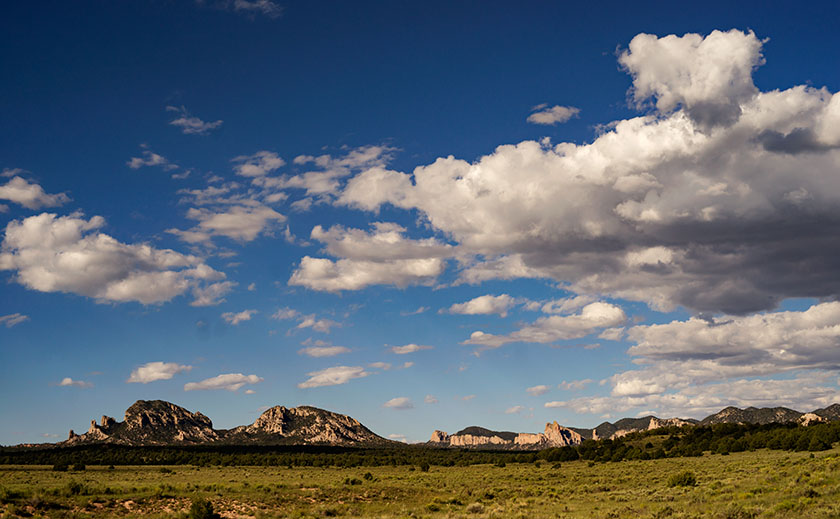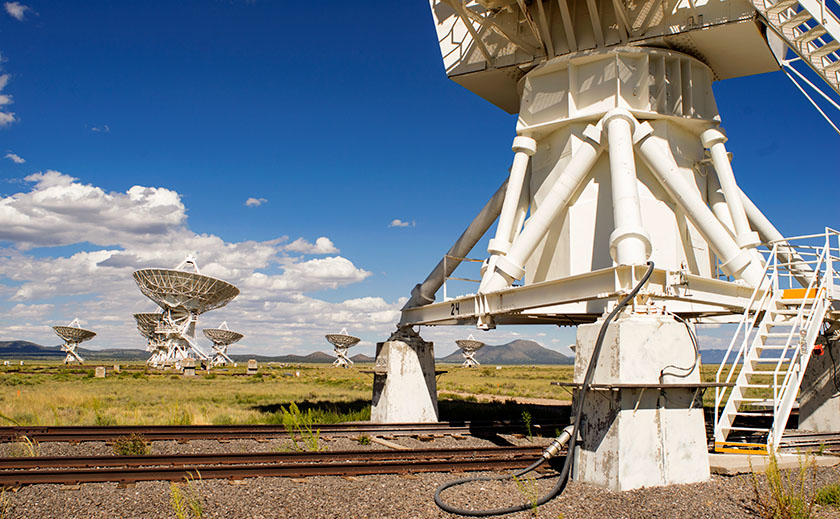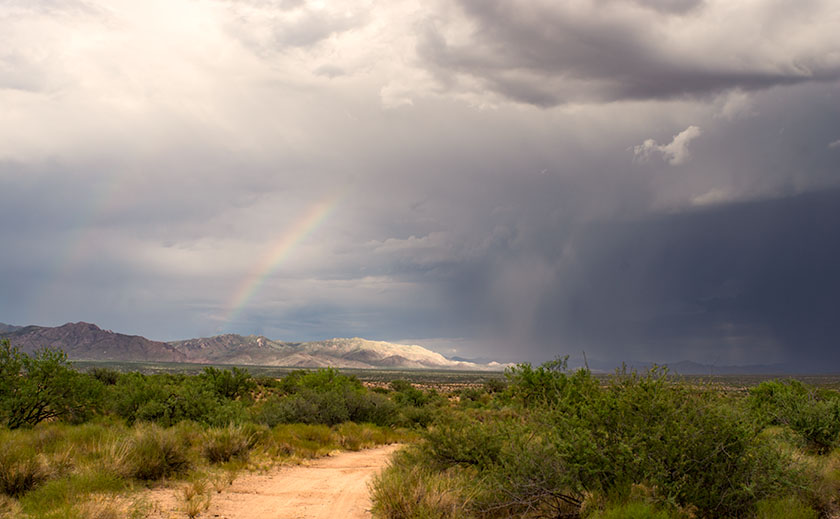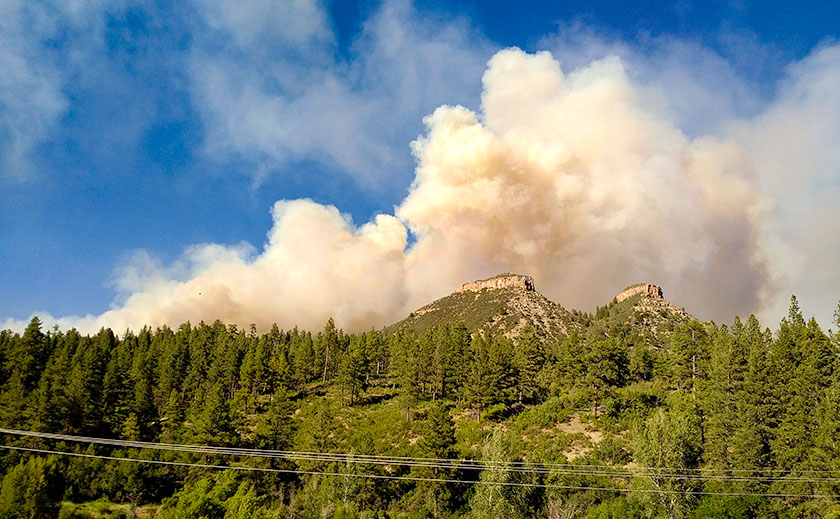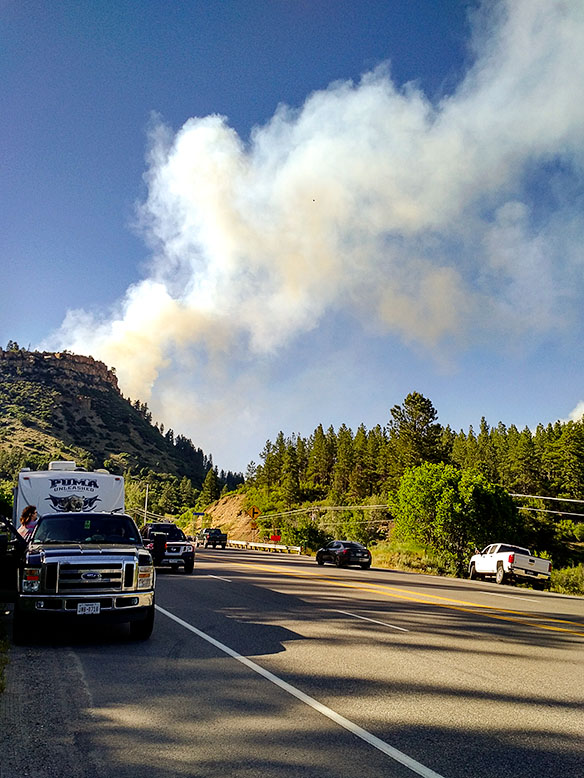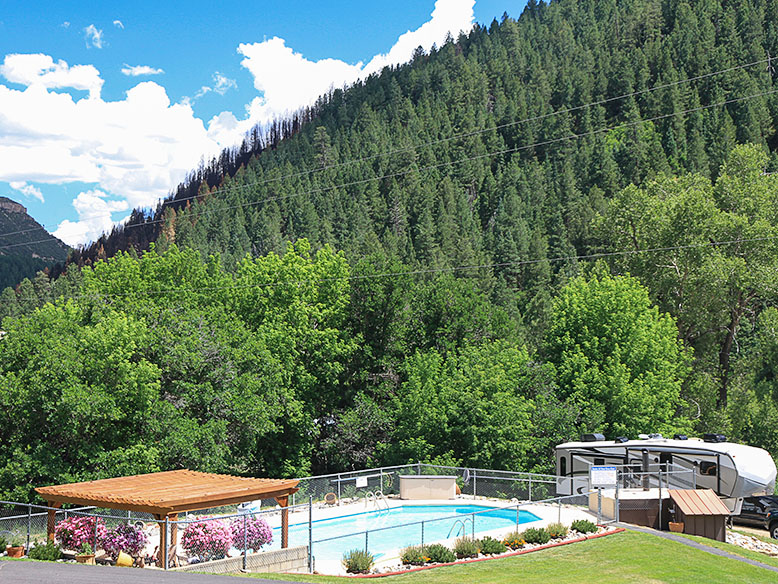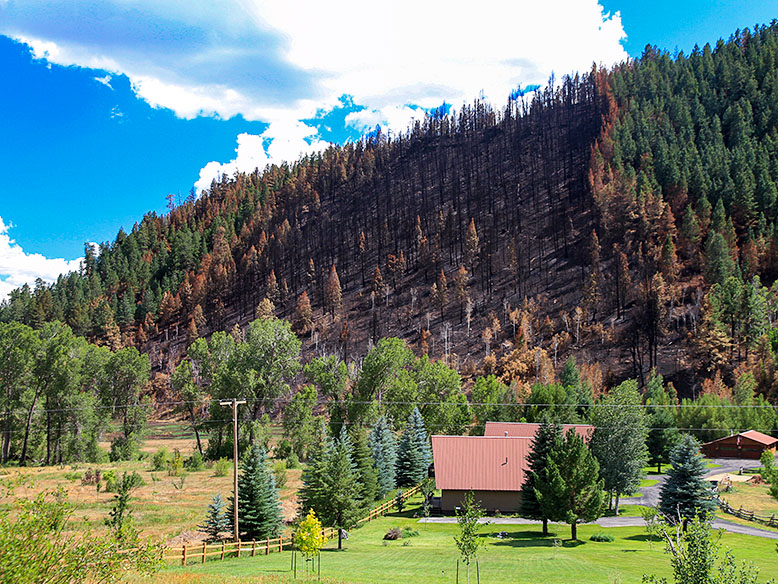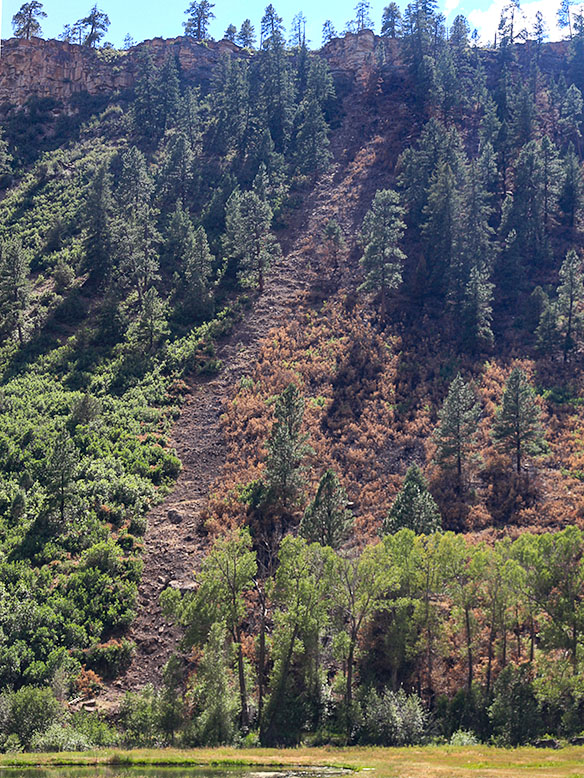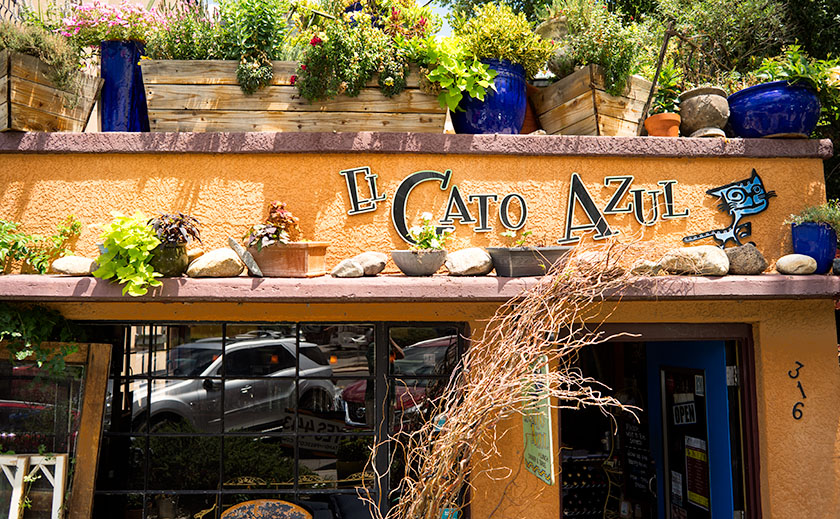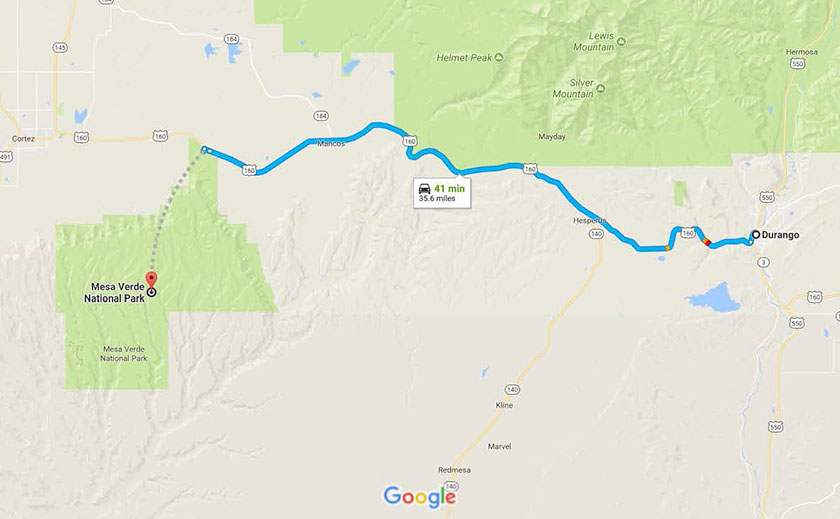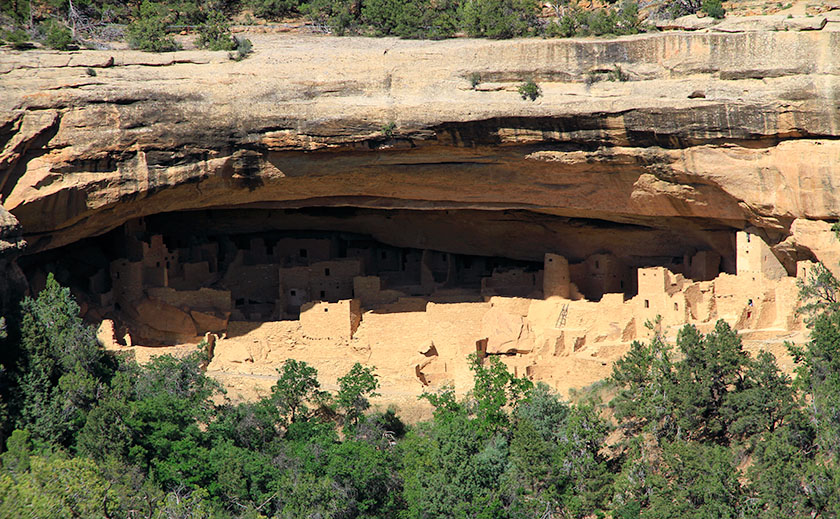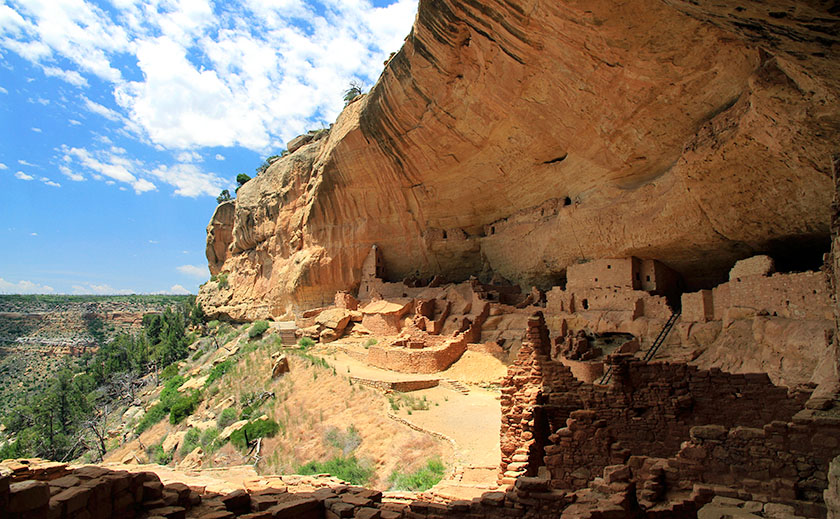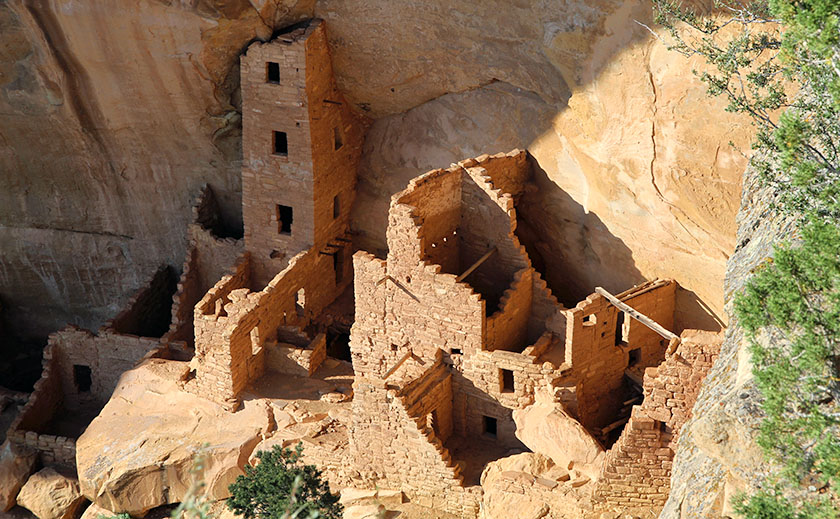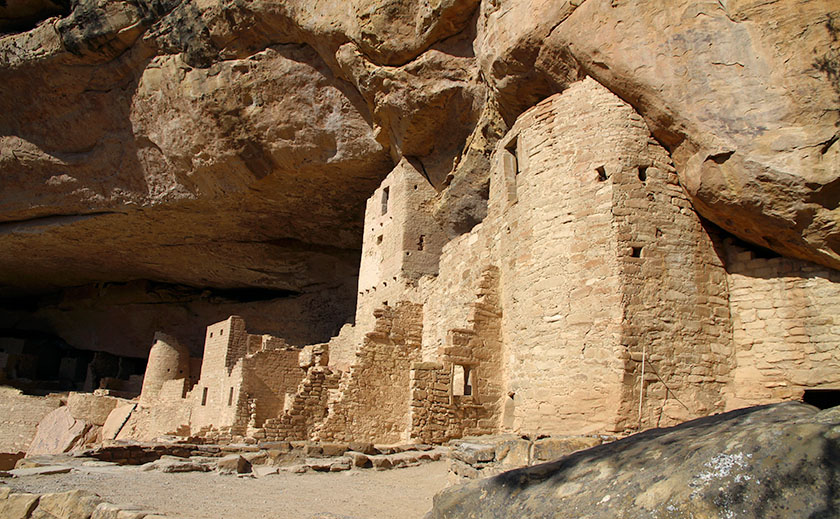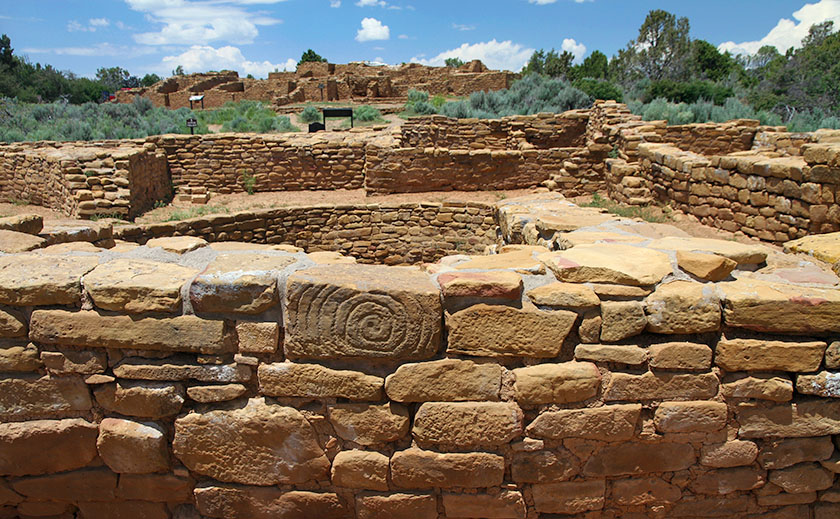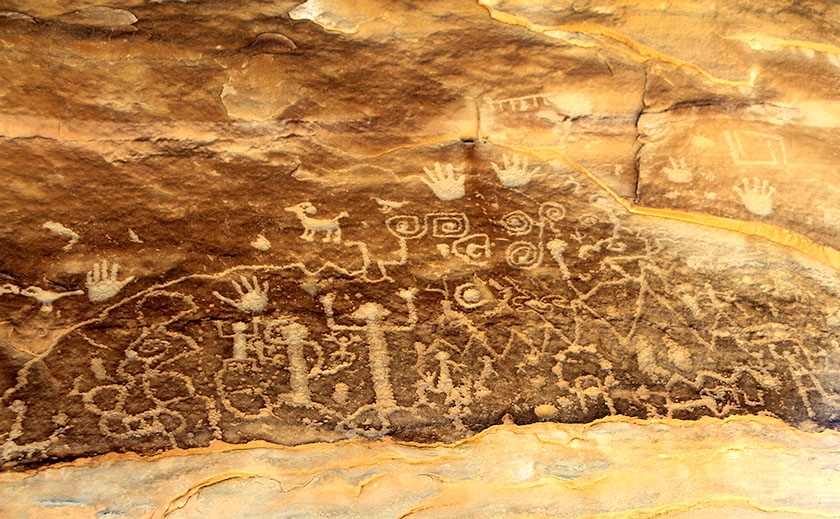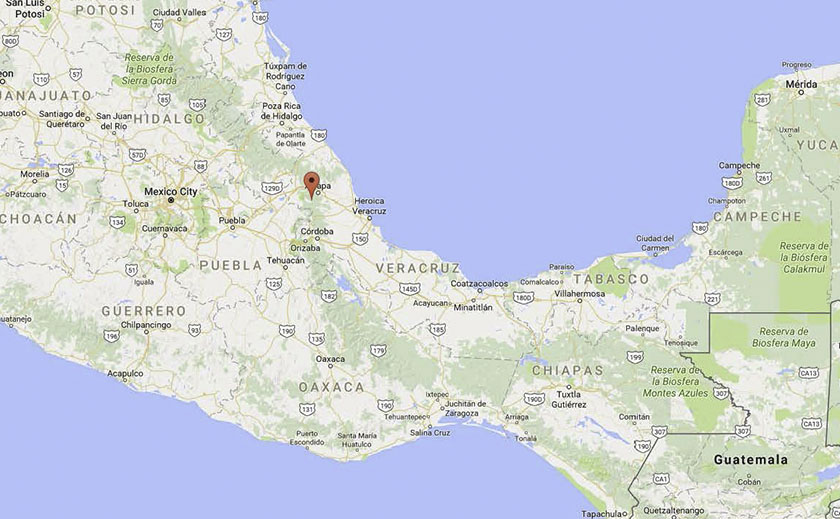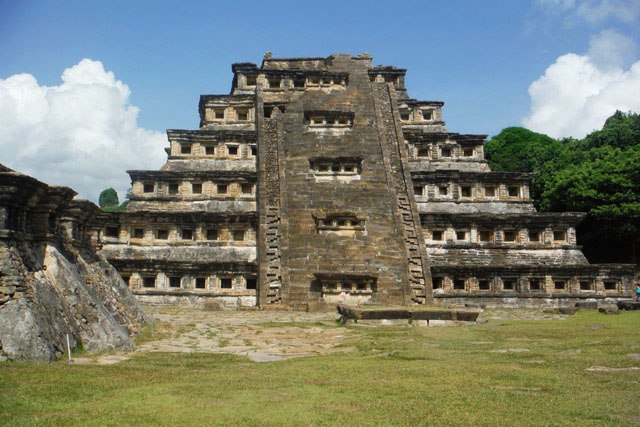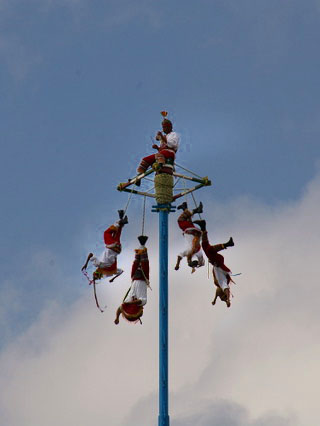One of the things tourists do upon arrival is to visit the city park. I don’t know why, but when you browse the brochures, the local park is usually at the top of the list of to-do things. For example, San Francisco has the Golden Gate Park, there’s Central Park in New York, and Griffith Park in Los Angeles. Phoenix has the Margaret T. Hance Deck Park, but I don’t think anyone has ever gone there. These are open spaces within the city that their leaders felt important to protect from development. Springerville has Casa Malpais which isn’t really a park in the traditional sense of the word, but rather a fourteen acre archaeological preserve that the city owns and maintains. In other words, it’s a Pueblo Indian ruins.
Listed on the National Register of Historic Places since 1966, Casa Malpais was built on a basalt ledge overlooking the Little Colorado River a couple of miles north of Springerville. The Mogollon people lived there from 1250 to 1350, before abandoning the site. Frank Cushing was the first European Archeologist to visit the Pueblo in the 1800s and the University of Arizona did partial excavations a hundred years later. The findings of that dig are on display at the museum on Main Street back in town.
Queen Anne and I wanted to see Casa Malpais yesterday, so we stopped by the museum to get directions. We found out that the pueblo is not open for self guided tours, but guides take visitors out to the site three times daily. Since it only cost $10.00 per person ($8.00 for geezers), we signed up for the next bus. As we waited for our tour, we watched a twenty-minute background film that explained the history and what to expect. The museum hosts made sure we had sturdy shoes, sun block and water before we left. At 1:00 we (just the two of us) boarded the shuttle for what was a private tour. After making sure we had all of our gear, Phil, our guide drove us to the scene.
When we arrived we got off the bus and I slung my camera bag over my shoulder while Anne threw some water in her purse/backpack thingy. Phil asked if we didn’t want to take a walking stick, so we each grabbed one from the rack. Looking up at the cliff, I thought, “This will be fun.” I didn’t see an obvious way to get up there. After we were ready, Phil explained, “The trial over there used to be the only one until the archaeologist brought a drone to film the site a couple of years ago. After studying the films, they realized that there was a second path up the ledge, so we’re going to go up this way and come down on the old trail.” I wondered what he was talking about, I couldn’t see a trail in front of us much less the one over there. While we’re at it, I don’t see any ruins up there either!
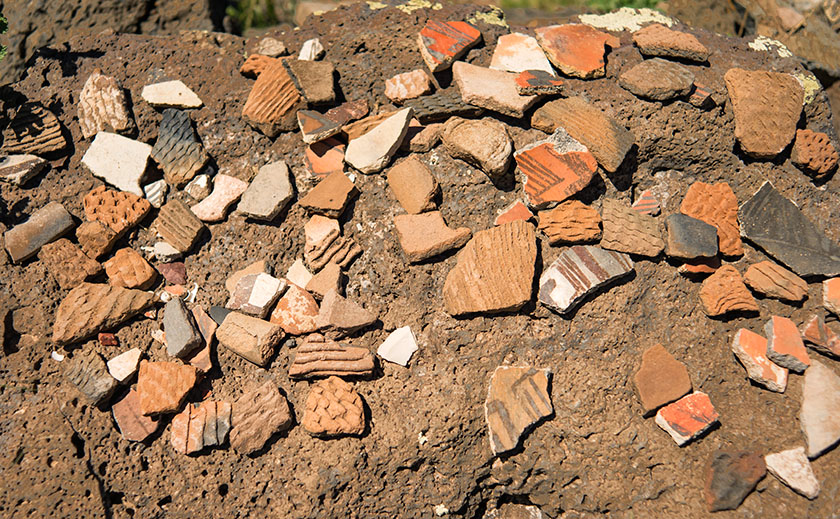
We started walking up where the bigger rocks were kicked aside until we got to flat rocks that were reinforced and cemented in place. Ah, a trail — I get it. We’d move forward until we got winded, and Phil would conveniently stop and find something to talk about long enough that we’d catch our breath. The walking stick helped me keep my balance with a camera on one shoulder and bag on the other. Before we knew it, we reached the Grand Kiva — a large meeting hall — with basalt stone walls four-foot tall and equally wide. We listened as Phil talked about two hundred men packed in the smoke-filled ceremonial room. Then we went up more steps till we got to the 150 room apartment house were we heard stories of the ancients and how the volunteers take care of it.
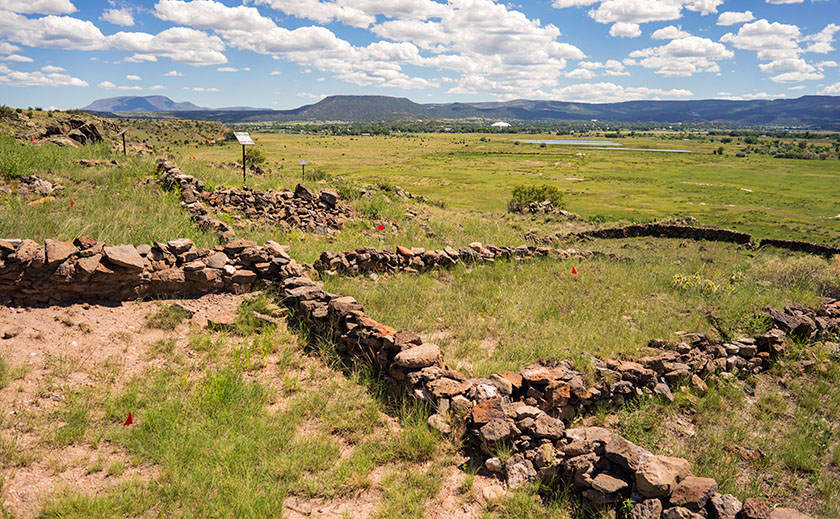
As we walked around the pueblo’s back side, Phil took us aside toward the cliff wall. “This is the lost canyon,” he said pointing at where the lead edge of basalt columns had pulled away from the original cliff. “Jeff and I have explored back there,” he said in such a way that you knew he had a genuine love of this place. Then he showed us three rams head petroglyphs carved into the rocks. “That one marks the summer solstice, the one on the right is the spring equinox and the one in the middle lines up with the cross quarter.” I would never had seen them, much less got a photograph if we were on our own.
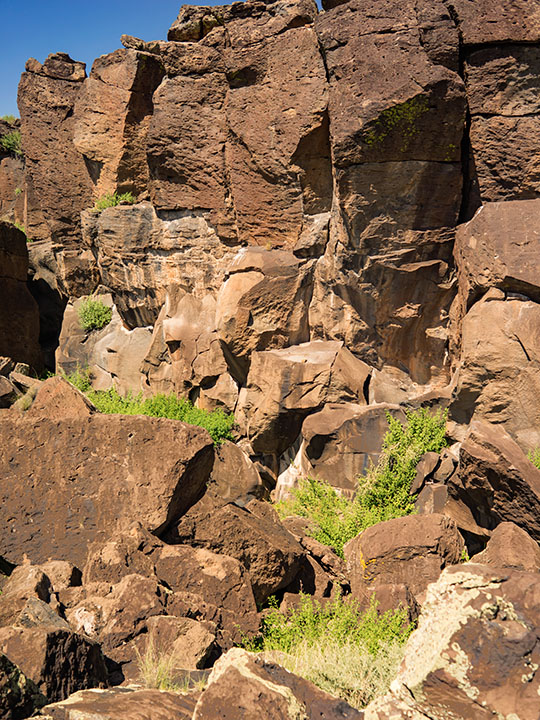
We spent two hours on the ledge listening to Phil explain what he knew and us asking questions like a couple of six-year-old. He answered what he could and was honest about what his speculations were. “I wish I could go back 800 years to know that answer, but my best guess is … ” Before we knew it, we were back at the bus. Neither of us had fallen and I hadn’t dropped anything into a bottomless crevice, so I counted the day a success. When I mentioned this, Phil said, “Yeah, last month I went out with four and came back with two. My boss said, this is not good.” On the drive back he told us that story. If you’d like to hear it, sign up for a tour and ask Phil.

